Top Rankings
Lapeer Independent School District ranks among the top 20% of public school district in Michigan for:
Category
Attribute
Overall Rank
Highest overall rank (Top 20%)
Math Proficiency
Highest math proficiency (Top 20%)
Student Attention
Lowest student:teacher ratio (Top 1%)
For the 2025 school year, there is 1 public high school serving 35 students in Lapeer Independent School District. This district's average high testing ranking is 8/10, which is in the top 30% of public high schools in Michigan.
Public High School in Lapeer Independent School District have an average math proficiency score of 50% (versus the Michigan public high school average of 30%), and reading proficiency score of 50% (versus the 48% statewide average).
Minority enrollment is 0% of the student body (majority Black and Hispanic), which is less than the Michigan public high school average of 36% (majority Black).
Overview
This School District
This State (MI)
# Schools
2 Schools
1,342 Schools
# Students
44 Students
534,573 Students
# Teachers
30 Teachers
30,578 Teachers
Student : Teacher Ratio
1:1
1:1
District Rank
Lapeer Independent School District, which is ranked within the top 20% of all 851 school districts in Michigan (based off of combined math and reading proficiency testing data) for the 2021-2022 school year.
Overall District Rank
#168 out of 866 school districts
(Top 20%)
(Top 20%)

Math Test Scores (% Proficient)
<50%
34%

Reading/Language Arts Test Scores (% Proficient)
<50%
45%

Graduation Rate
(15-16)<50%
85%
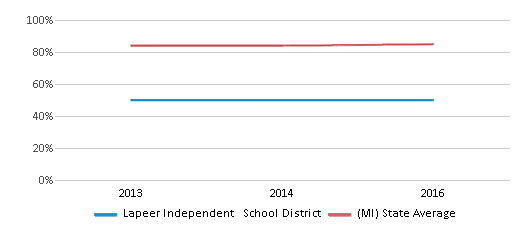
Students by Ethnicity:
Diversity Score
0.04
0.55
# American Indian Students
n/a
4,986 Students
% American Indian Students
n/a
1%
# Asian Students
n/a
18,254 Students
% Asian Students
n/a
4%
# Hispanic Students
1 Student
48,354 Students
% Hispanic Students
2%
9%
# Black Students
n/a
93,042 Students
% Black Students
n/a
17%
# White Students
43 Students
343,842 Students
% White Students
98%
64%
# Hawaiian Students
n/a
513 Students
% Hawaiian Students
n/a
n/a
# Two or more races Students
n/a
24,779 Students
% of Two or more races Students
n/a
5%
Students by Grade:
# Students in PK Grade:
-
-
# Students in K Grade:
1
5,648
# Students in 1st Grade:
3
5,648
# Students in 2nd Grade:
-
5,769
# Students in 3rd Grade:
1
5,907
# Students in 4th Grade:
-
5,943
# Students in 5th Grade:
2
6,233
# Students in 6th Grade:
-
11,476
# Students in 7th Grade:
3
17,607
# Students in 8th Grade:
2
20,600
# Students in 9th Grade:
1
114,668
# Students in 10th Grade:
2
112,993
# Students in 11th Grade:
2
109,871
# Students in 12th Grade:
2
109,317
# Ungraded Students:
25
2,893
District Revenue and Spending
Total Revenue
$21 MM
$25,476 MM
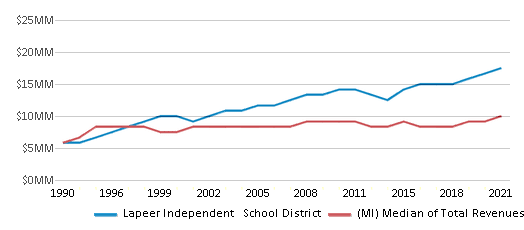
Spending
$19 MM
$24,351 MM
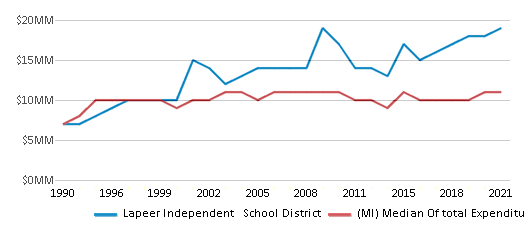
Revenue / Student (19-20)
$391,962
$14,589
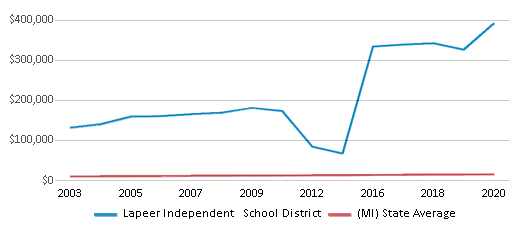
Spending / Student (19-20)
$352,885
$14,302
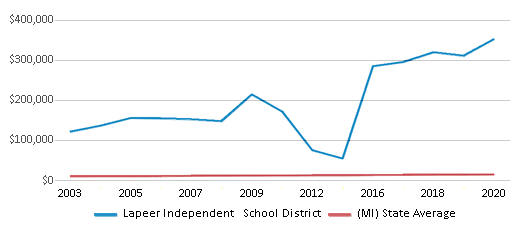
Best Lapeer Independent School District Public High Schools (2025)
School
(Math and Reading Proficiency)
(Math and Reading Proficiency)
Location
Grades
Students
Rank: #11.
Lapeer Co Education And Technology Center
Vocational School
(Math: <50% | Reading: <50%)
Rank:
Rank:
8/
Top 30%10
690 N Lake Pleasant Rd
Attica, MI 48412
(810) 664-1124
Attica, MI 48412
(810) 664-1124
Grades: PK-12
| 35 students
Recent Articles

Year-Round Or Traditional Schedule?
Which is more appropriate for your child? A year-round attendance schedule or traditional schedule? We look at the pros and cons.

Why You Should Encourage Your Child to Join a Sports Team
Participating in team sports has a great many benefits for children, there is no doubt. In this article you will learn what those benefits are.

White Students are Now the Minority in U.S. Public Schools
Increasing birth rates among immigrant families from Asia and Central and South America, combined with lower birth rates among white families, means that for the first time in history, public school students in the United States are majority-minority. This shift in demographics poses difficulties for schools as they work to accommodate children of varying language abilities and socio-economic backgrounds.





